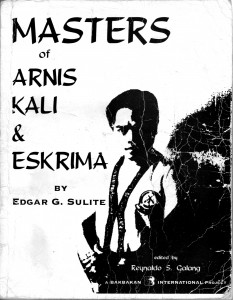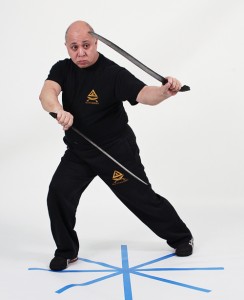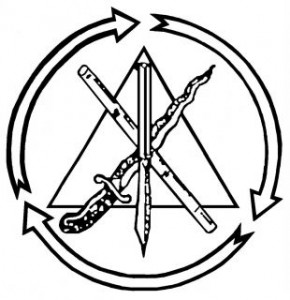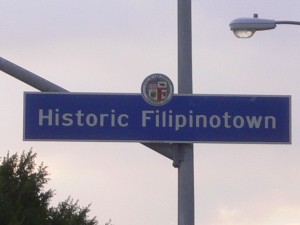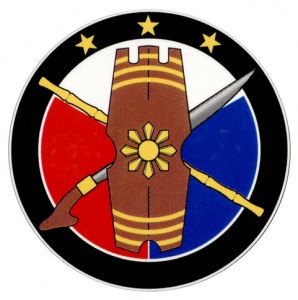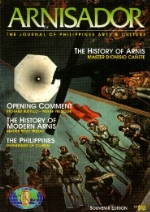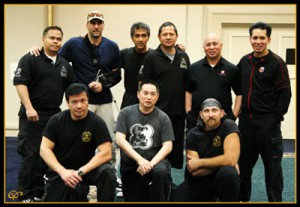
Los Angeles – Historic Filipinotown Chapter of Lameco SOG By Mandirigma.org Lameco SOG members including: Joel Adriatico, Roger Agbulos, Jason Ancheta, Hospecio "Bud" Balani Jr., Ron Balicki, Rem V. Cruz, Marc F. Denny, Mar Elepaño, Bryant Emerson, Choy Flores, Dino Flores, Dave Gould, Steven Grody, Elmer R. Hebia, Sung Han Kim, Eric Dupois Koh, Arnold A. Noche, Lowell Pueblos, Gary Quan, Phillip Rapagna, Pantaleon "Mang Leo" Revilles, Jr. (RIP), Hans Anton Tan, Steve Tarani, Pelix Velenciar and Rodney Wilson. The group occasionally gets together to train or collaborate. Many are busy with heading their own organizations. A good number of the Lameco SOG members have continued to train together regularly since their teacher's death in 1997. Besides continued training in the Lameco Backyard Method, the group also continued study in the Lameco primary root fighting systems of Ilustrisimo and De Campo Uno-Dos-Tres Orihinal. This group is sometimes reffered to as The Los Angeles – Historic Filipinotown Chapter of Lameco SOG. This includes Guros Joel Adriatico, Hospecio "Bud" Balani Jr., Mar Elepaño, Choy Flores, Dino Flores, Arnold Noche, Gary Quan, Hans Anton Tan and Pantaleon “Mang Leo” Revilles, Jr. (RIP). It is also this group that came up with the term “SOG” or Sulite Orehenal Group with the guidance and approval of the two highest-ranking Lameco Eskrima International members, Master Christopher N. Ricketts and Master Reynaldo S. Galang. A few of these members to teach the public, however most prefer to keep their knowledge a private matter. When Christopher N. Ricketts moved to California backyard members Hospecio "Bud" Balani Jr., Mar Elepaño, Bryant Emerson, Ron Baliki, Choy Flores, Dino Flores and Arnold Noche trained under Master Rickets in Ilustrisimo and recognized him as the highest ranking Lameco Eskrima Member. With the tragic passing of Master Ricketts, the highest ranking Lameco Eskrima Member is currently Master Rey Galang Above is the largest Filipino-American mural in the U.S.A. located in Historic Filipinotown, Los Angeles. Painted by Eliseo Art Silva. The mural measures 145 feet x 25 feet. The mural was created in commemoration of the Centennial of the Philippine Revolution against Spain … [Read more...]
